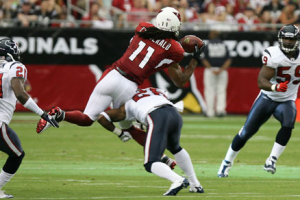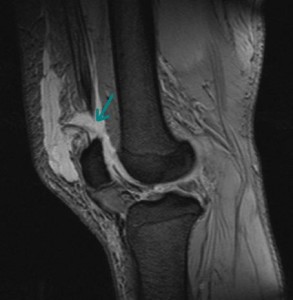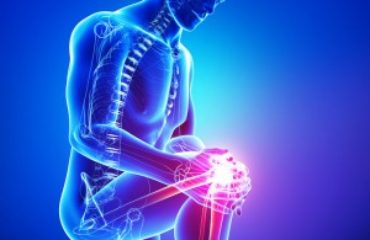The quadriceps tendon is a large fibrous structure just above the kneecap. This tendon is part of the complex extensor mechanism of the knee that includes the patella (kneecap), the patellar tendon, the quadriceps muscle, and the quadriceps tendon. A tear in the quadriceps tendon is a common athletic injury.
What is the role of the quadriceps tendon?
Called the quad tendon, this tendon helps with leg extension, performing a kicking motion, and straightening out the knee. When the thigh muscle (quadriceps) contracts, a force is sent through the quad tendon, across the patella, and through the patellar tendon. The quad tendon can withstand considerable force, and it attaches the quadriceps muscle to the bone.
What is a quadriceps tendon tear?
A partial quad tendon tear can be unilateral (one sided), or bilateral (both sides), which is less common. Quadriceps tendon tears are more common than patellar tendon ruptures, but they are more likely to be misdiagnosed.
but they are more likely to be misdiagnosed.
Who gets a quadriceps tendon tear?
Quadriceps tendon ruptures can occur in any age group, but they are more common in people age 40 years and older. In a report that spanned 100 years, 88% of quadriceps tendon tears were seen in persons older than 40 years. Partial quad tendon tears often occur in young athletes, with one report showing the average age at 28 years. Both partial and complete tears are more common in males than females.
What are the symptoms of a quadriceps tendon tear?
A partial quad tendon tear will cause knee pain, mild swelling, and decreased range of motion. If the tendon is completely ruptured, the person typically cannot straighten the knee without help. Common symptoms are mild bruising, tenderness, and decreased range of motion.
What causes a quadriceps tendon tear?
The quad tendon is usually strong and resistant to tearing. However, in a recent study, 64% of cases showed pathological changes associated with decreased fiber thickness and hypoxic degeneration. People with certain diseases are more at risk than others. Diseases associated with a quad tendon rupture include systemic lupus erythematosus, hyperparathyroidism, obesity, gout, rheumatoid arthritis, and diabetes.
How common is quadriceps tendon tear?
According to a recent study, the incidence of quad tendon tears is 1,37 per 100,000 people per year.
How is a quadriceps tendon tear diagnosed?
The Phoenix orthopedic doctor will inquire about your injury, conduct a thorough physical examination, and perform certain diagnostic tests. Most patients with a complete tear are not able to  straighten the knee or raise the leg. X-rays are used to assess the bony structures, whereas a magnetic resonance imaging (MRI) scan is used to assess for other injuries.
straighten the knee or raise the leg. X-rays are used to assess the bony structures, whereas a magnetic resonance imaging (MRI) scan is used to assess for other injuries.
How are quadriceps tendon tears treated?
Partial tears of the quad tendon can often be managed without surgery. Treatment involves using a knee immobilizer or brace, use of ice packs to control pain and swelling, resting from activities, and a short course of physical therapy. The therapist works with the patient to strengthen and increase flexibility of the affected leg.
Complete tears require surgical intervention. The surgery must be done within 1-2 weeks of the injury for best results. The surgery involves suturing the torn tendon back to its original site of attachment (the patella). Small holes are made in the patella, and loop sutures go through the holes to pull the tendon tight to the bone.
What can I expect with rehabilitation?
After quadriceps tendon repair surgery, you will wear a brace to protect the knee. In addition, you must use crutches and avoid weight-bearing for a while. The physical therapist works with you to learn range of motion exercises. After 3 months, the brace is discontinued. It generally is 4-6 months before you can resume sports activities.
Dr. Adam Farber at Phoenix Shoulder and Knee is the top sports medicine specialist in Phoenix metro area. He offers comprehensive nonoperative and operative treatment for sports injuries such as quad tears. Call us today!



